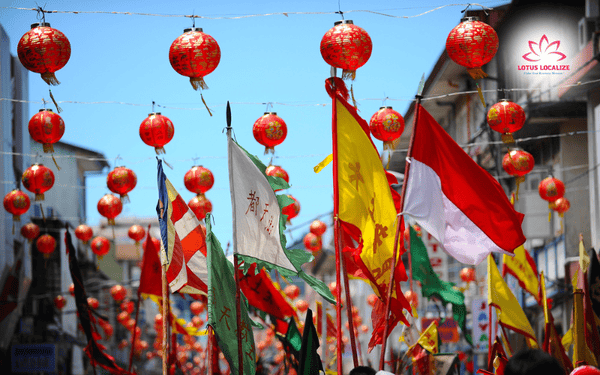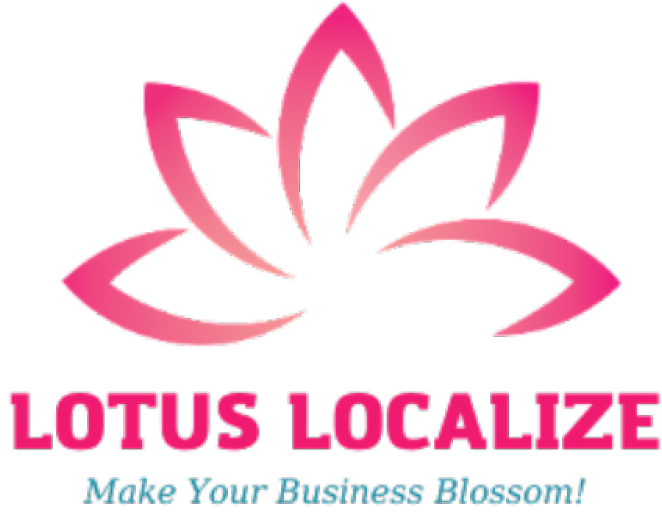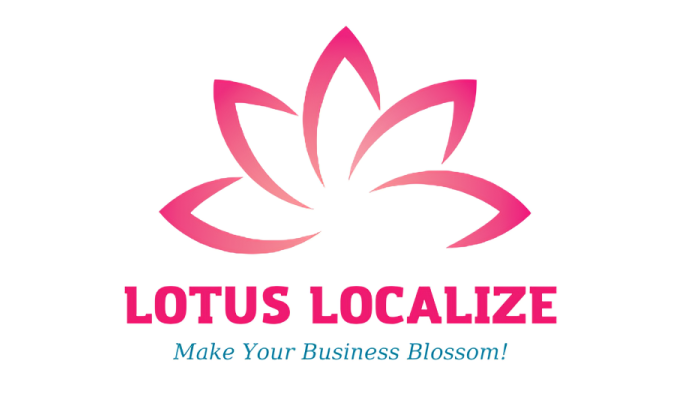
Avoiding 8 common localization mistakes: Essential steps for success in global markets
As businesses expand into international markets, effective localization is key to building strong connections with local audiences and ensuring success. However, localization mistakes—ranging from language errors to design oversights—can undermine even the best intentions, leading to user dissatisfaction, brand misrepresentation, and costly setbacks. Here, we cover eight common localization mistakes to avoid, as well as best practices for creating a smooth, culturally aligned user experience that will help your brand thrive globally.
8 common localization mistakes that can disrupt your global strategy
Ensuring that your product or service resonates with local audiences requires more than just translation—it demands careful localization. Localization is not just about language; it’s about adapting your content, design, and product to meet the cultural, legal, and technical expectations of each market.
Unfortunately, many companies make common mistakes that can damage their brand’s credibility, confuse customers, or even lead to legal issues. To avoid these costly pitfalls, it’s important to follow best practices and establish a proactive approach to localization.
Overlooking cultural nuances and sensitivities
Cultural sensitivity is a cornerstone of successful localization, yet it’s often one of the first elements overlooked. Each region has unique values, traditions, and taboos, which can vary widely, even among countries that speak the same language. What works in one market may seem confusing, inappropriate, or even offensive in another if cultural nuances are ignored. Imagery, colors, symbols, and language all have context-specific meanings that impact how local audiences perceive a brand.

Example: A global fashion retailer launched a campaign using colors considered lucky in one market but associated with mourning in another. Without adapting the color scheme, the brand faced unexpected backlash and lost engagement in the latter region.
Solution: Conduct extensive cultural research for each target region. Enlist local cultural consultants who understand regional symbolism, aesthetics, and traditions to help tailor your content, visuals, and messaging. Testing campaigns with local focus groups before launch is also an effective way to gather feedback and avoid potential issues.
Read more: 6 powerful benefits of localization to supercharge your business growth
Relying on literal translations
Direct translations can fail to convey the intended meaning, humor, or tone of a message, especially when dealing with idiomatic expressions or complex phrases. Literal translations can lead to misunderstandings and may even create unintended humor, detracting from the brand’s professionalism and message clarity.
Example: A popular slogan from a food company, which suggested product quality, was translated literally into several languages. However, in some cultures, the phrasing came across as boastful or overly confident, leading to a disconnect with local consumers.
Solution: Choose translators who are not only skilled linguists but also native to the target language. They should focus on the meaning and tone of the original message, rather than a word-for-word translation, ensuring that the final product is contextually appropriate and resonates with local audiences.
Ignoring local design preferences
Design elements such as layout, fonts, color schemes, and text alignment are key to user experience, and they vary significantly across cultures. What may be visually appealing or standard in one region might be off-putting or even inappropriate in another. Ignoring these design preferences can lead to reduced engagement, decreased usability, and a lack of brand cohesion across regions.

Example: A tech company launched a website in multiple countries but did not adapt its layout for right-to-left (RTL) languages, such as Arabic and Hebrew. This led to navigation issues, with text and visuals misaligned for RTL users, resulting in a frustrating user experience.
Solution: Partner with local designers who understand the visual preferences and functional requirements of each market. For RTL languages, ensure that the layout, text alignment, and navigational elements are adjusted accordingly. Additionally, consider the cultural associations of colors and fonts to create a visually appealing and culturally appropriate design.
Neglecting regulatory and compliance requirements
Each country has distinct legal and regulatory requirements for product labeling, advertising, and documentation. Overlooking these requirements can have serious consequences, including legal penalties, product recalls, and a damaged reputation. Ensuring compliance from the beginning is essential to avoid costly mistakes and delays in market entry.

Example: A healthcare company launched a product in a new market without adhering to the local language and labeling requirements. This oversight led to a halt in distribution until new compliant labels were created, causing significant financial and reputational losses.
Solution: Before entering a new market, work closely with legal experts who understand local regulations. Conduct a comprehensive review of all labeling, advertising, and compliance requirements, and make any necessary adjustments to the product documentation. Stay informed on regulatory changes to avoid future compliance issues.
Disregarding local user behavior and preferences
User behavior, such as payment preferences, navigation patterns, and content consumption habits, varies greatly between regions. A failure to adapt the user experience to these local preferences can reduce engagement and hinder user retention, especially if your product doesn’t align with common expectations.
Example: An e-commerce platform didn’t accommodate popular local payment options in certain regions, resulting in lower sales as users preferred payment methods that were not offered.
Solution: Conduct thorough user research to understand local habits and preferences. Adapt the user interface, payment options, and content presentation to fit the target audience’s expectations and behaviors. Offering popular local payment methods and structuring content to match local browsing habits can significantly improve engagement.
Rushing through the localization process
Localization is a complex and multi-layered process that requires adequate time for research, translation, adaptation, and quality control. When companies rush the process, they risk compromising on quality, leading to costly mistakes and a diminished user experience. Rushing localization can lead to translation errors, culturally insensitive content, and technical issues that frustrate users.

Example: A software company hurriedly translated its app for a new market, resulting in numerous errors and bugs that impacted usability. Users complained of unclear instructions and broken features, which damaged the app’s reputation and led to a decline in downloads.
Solution: Allocate sufficient time for each stage of localization, including translation, cultural adaptation, quality checks, and user testing. Avoid shortcuts and work with experienced localization teams to ensure the final product is polished and culturally appropriate. Planning and timeline management are essential to balance quality with timely delivery.
Read more: Why pharma translation matters in today’s global healthcare landscape
Inconsistent terminology and style
Consistency is vital in financial, medical, and legal documents, where accurate terminology is critical to understanding and compliance. Using inconsistent terms or varying style choices across documents can create confusion, reduce credibility, and weaken brand trust.
Example: A financial institution released translated reports where the same terms were inconsistently translated across documents. This created confusion among investors and made reports difficult to interpret accurately.
Solution: Develop a style guide and terminology glossary to ensure uniform language and tone across all translations. Implement terminology management tools to help translators stay consistent, and conduct final reviews to check for consistency across all content.
Neglecting local SEO optimization
SEO plays a crucial role in digital visibility, and optimizing for local search is essential to attract organic traffic in new markets. Failing to localize SEO elements like keywords, meta descriptions, and URL structures can make it difficult for users to find your content online, limiting your reach and hindering engagement.

Example: A travel company translated its website content but didn’t adjust keywords and metadata to align with local search behavior. As a result, the site had low visibility in search engine results, impacting traffic and bookings.
Solution: Perform keyword research for each target market, focusing on local search behavior and relevant terms. Adapt meta tags, headers, and alt text to reflect commonly searched phrases, and consider local search engines if they are widely used in the region.
How to avoid localization mistakes: Best practices for global success
Avoiding localization mistakes requires a proactive, structured approach that combines cultural sensitivity, strategic planning, and quality checks. Here are key best practices to guide you toward successful localization:
- Invest in thorough market research: Begin with a deep dive into each target market’s cultural norms, legal standards, and user preferences. Knowing the unique characteristics of each audience allows you to tailor your content to resonate while avoiding cultural pitfalls and regulatory hurdles.
- Collaborate with local experts: Rely on native-speaking translators, cultural consultants, and local legal advisors who understand the intricacies of language, law, and cultural expectations. This expertise not only guarantees accuracy but also helps your brand connect meaningfully with each market.

- Implement robust quality assurance processes: Establish a thorough QA system that includes multiple review stages—linguistic, technical, and functional testing. Incorporate feedback loops to continuously refine your localization, and ensure the final product meets high standards for quality and usability.
- Optimize for local SEO: Customize your SEO strategy to align with each market’s search behaviors and popular keywords. This means adapting content to local search engines, understanding local SEO nuances, and optimizing terms that reflect the language and search habits of your audience.
By following these best practices, you create an effective, user-centered localization strategy that helps your brand build trust, boost engagement, and succeed globally. Avoiding these mistakes not only reduces costly setbacks but positions your brand as thoughtful and responsive in every market, setting the stage for long-term growth and credibility.
In summary, avoiding common localization mistakes is essential for building trust and achieving sustainable growth across diverse markets. By investing in thorough research, partnering with local experts, implementing robust quality assurance, and optimizing for local SEO, your brand can create a meaningful, user-focused experience that resonates globally.
Lotus Localize is here to support your journey to global success. With our team of expert native-speaking linguists, cultural consultants, and industry specialists, we deliver high-quality, precise localization services tailored to your brand’s unique needs. Let Lotus Localize help you avoid the pitfalls of localization and expand seamlessly into new markets. Contact us today to ensure your brand speaks authentically and effectively to audiences worldwide.
If you have any questions or need assistance with localization services: game localization, app localization, website localization, software localization… please contact Lotus Localize immediately at 0866 224 968 or visit the website: lotus-localize.com for advice on the best solutions!
QUALITY PROMISE
Lotus Localize offers consistent, high-quality service delivery in all customer engagements. Our in-house translators and staff adhere to well-established business processes, allowing us to communicate properly, deliver on time, and surpass client expectations.












